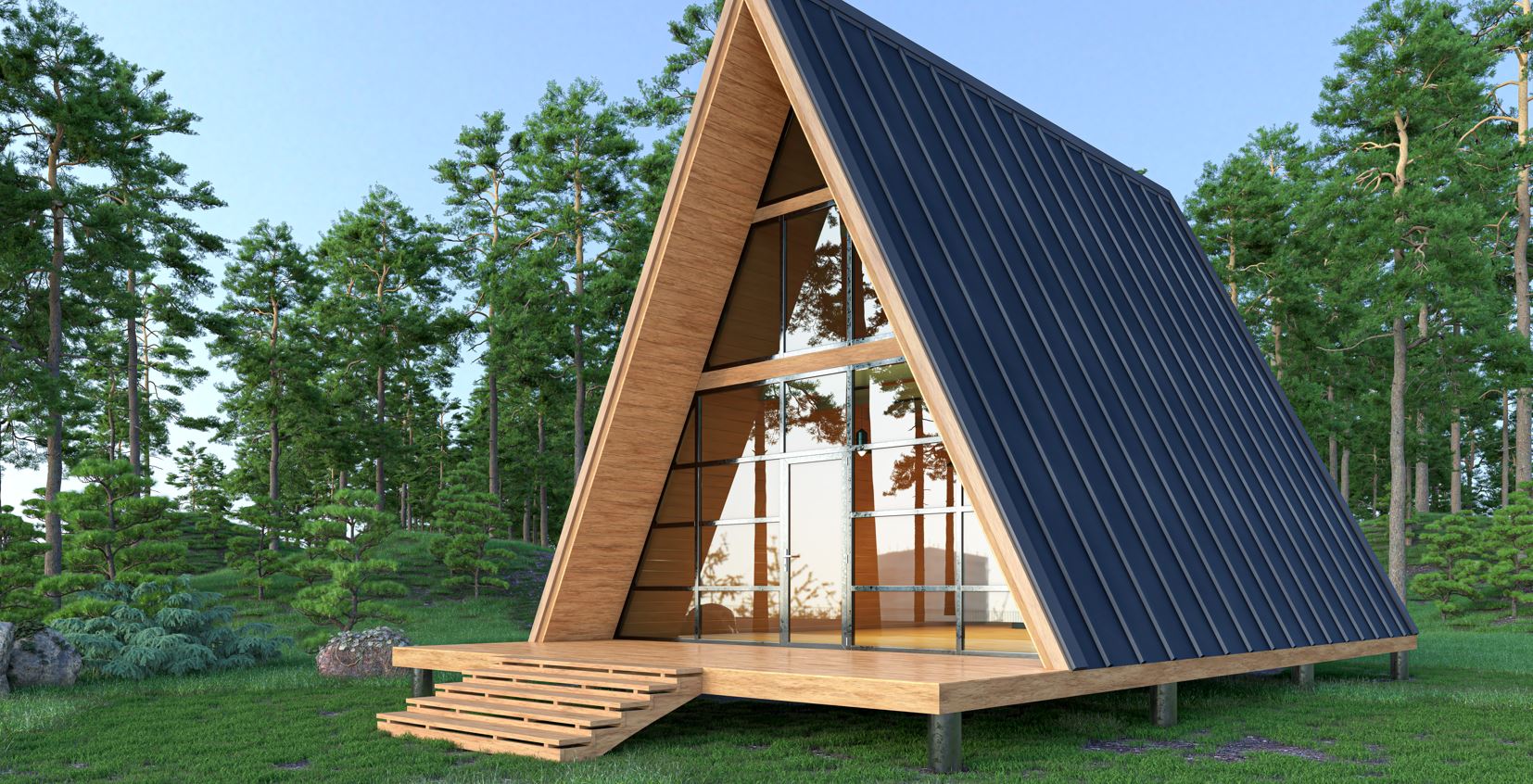Since ancient times, cities have been at the heart of social, cultural and economic exchange. With their architecture, public spaces transcend mere utility, as the fundamental pillars that define a city’s essence beyond its physical boundaries. These places play a crucial role in building an urban identity. This role is also prominent in the daily lives of city dwellers. Not only due to their architectural features, but also as platforms for collectivity, history and expression.
The architecture of public spaces is a tangible narrative that weaves together the cultural and social aspirations of a community. This type of architecture not only provides a meeting point, but also acts as a haven for contemplation, interaction and expression. As such, it takes into account not only functionality, but also cultural narrative and sustainability.
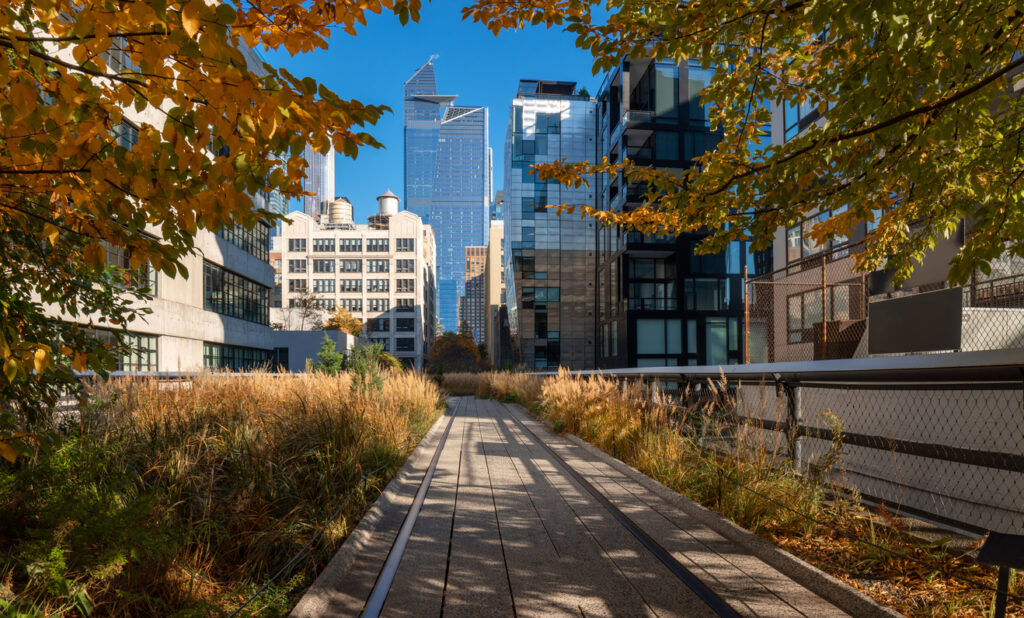
Illustration 1: New York view of the High Line waterfront in autumn. Elevated greenway with Hudson yards skyscrapers. Manhattan (Chelsea)
Human Connection behind an Iron Curtain: New York’s High Line
The High Line is located in emblematic New York City. It has succeeded in reviving a former elevated railway and is a magnificent example of urban reinvention. This linear park was designed by Diller Scofidio + Renfro in collaboration with James Corner Field Operations. Rising above the hustle and bustle of the city, it provides a unique connection between the Meatpacking District and Chelsea neighbourhoods.
What is interesting about the High Line is how an industrial remnant has been converted to a meeting place and space for contemplation. Consequently, the gardens, walkways and rest areas have been designed to integrate with historic elements of the railway. The result is a dreamlike atmosphere created in the heart of the metropolis. This project was awarded the Veronica Rudge Green Prize in Urban Design and the Margot and Harold Schiff Landscape Architecture Award. The High Line demonstrates how architecture can fuse past and present to forge a vibrant future.
Tivoli Gardens in Copenhagen: An Architectural and Cultural Celebration in the Heart of Denmark
Tivoli Gardens in Copenhagen, is a charming oasis in the midst of urban bustle. It is also a magnificent example of how architecture can combine history, entertainment and design to create an iconic public space. The gardens are located in the Danish capital. This iconic amusement park has delighted generations of visitors with its unique blend of tradition and innovation.
The architecture of Tivoli Gardens stands as a living testimony to the evolution of public spaces over time. Founded in 1843, the park has witnessed a number of epochs and architectural styles, from the original Victorian design to contemporary renovations. Thus, the ornate facades, historic pavilions and meticulously landscaped gardens capture the essence of different eras. As a result, they offer an enriching experience for visitors.
What sets Tivoli Gardens apart is the ability to act as a melting pot of experiences. It boasts an historic theatre where internationally renowned shows are staged. In addition, there are a wide range of attractions. These range from thrilling roller coasters to classic merry-go-rounds. In this way, the gardens provide a lesson in how architectural creativity can bring public spaces to life, enriching citizens and visitors’ lives.
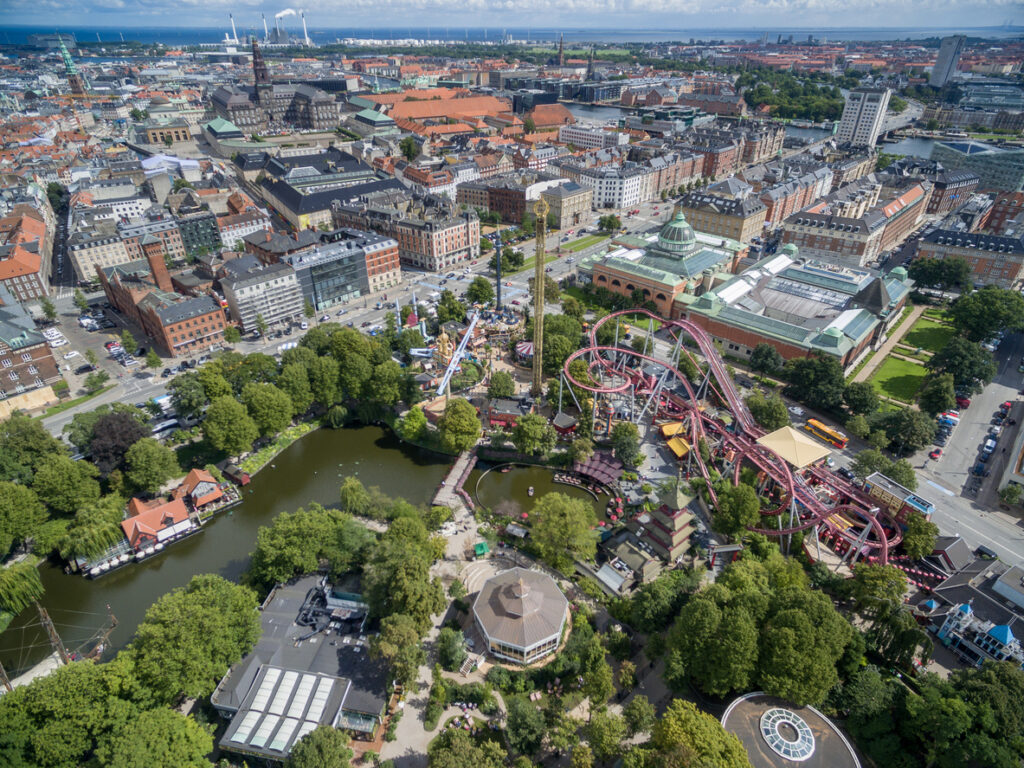
Illustration 2: Urban landscape of Copenhagen, Denmark. Historic centre of Copenhagen, Tivoli Garden
Beauty and culture: Retiro Park in Madrid
The Retiro Park is a living testimony to how architecture can shape public spaces, enriching the lives of inhabitants and visitors. The park is located in the heart of the Spanish capital. It is an oasis of greenery and architectural splendour, playing a key role in the history and identity of Madrid.
The architectural design of the Retiro dates back to the late 17th century. It was initially created as a pleasure garden for the Spanish monarchy. Since that time, it has undergone multiple transformations that have shaped its current landscape. Its iconic Palacio de Cristal, was designed by architect Ricardo Velázquez Bosco in 1887. This remains a supreme example of architectural elegance and creativity. The iron and glass structure took its inspiration from London’s Crystal Palace. While serving as an exhibition pavilion, it also provides an ethereal setting for cultural and artistic events.
What makes the Retiro Park even more fascinating is its ability to merge architecture and nature. Accordingly, the extensive gardens, serene lakes and shady paths provide a perfect counterpoint to the architectural structures. This balance between the built and the natural is essential to experiencing the park. The result is an environment that invites relaxation, contemplation and enjoyment.
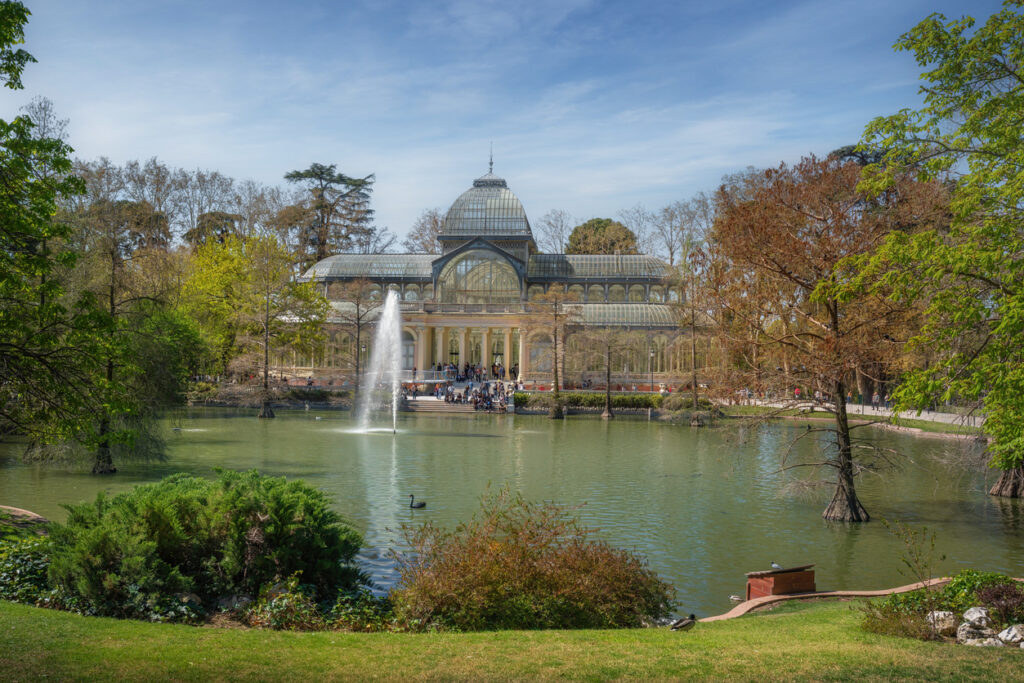
Illustration 3: Palacio de Cristal in Retiro Park
A Symphony of Art and Nature: Gardens by the Bay in Singapore
Singapore, known for being modern and progressive, is home to an architectural and natural oasis like no other: Gardens by the Bay. It was designed by Grant Associates in collaboration with WilkinsonEyre and Atelier One. This project has taken the interaction between humans and nature to another level.
What sets Gardens by the Bay apart is the ability to combine art, architecture and sustainability in a single space. For example, its impressive Supertrees, tall structures covered with plants and vegetation, have become city landmarks. They are also equipped with environmentally sustainable technology. The Flower Dome greenhouse, was awarded the Singapore Institute of Architects’ Sustainable Architecture Prize. This shows how architecture can promote environmental awareness without sacrificing the aesthetic aspects.
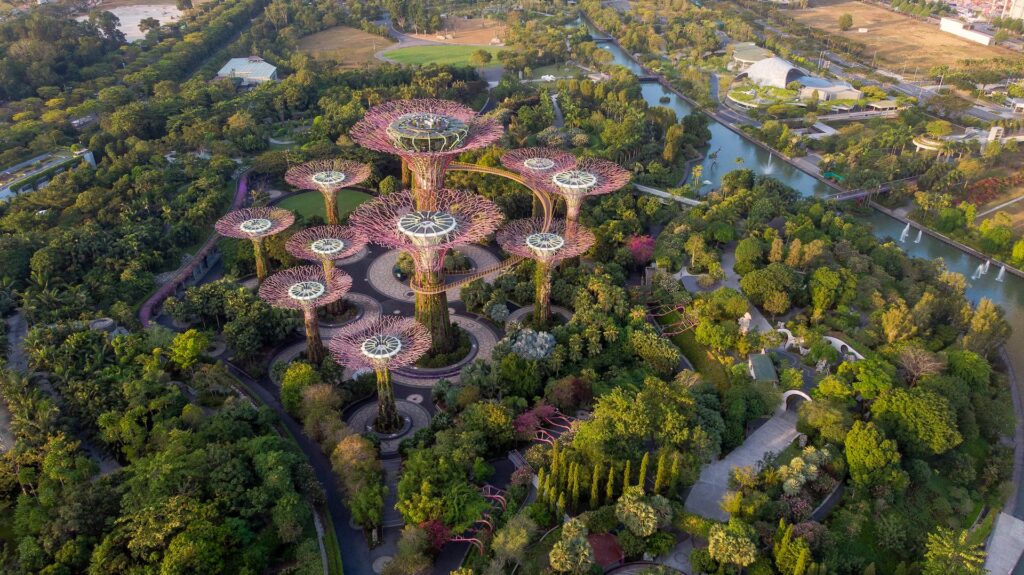
Illustration 4: Aerial image of the design of ‘Gardens by the Bay’ in Singapore
In the fabric of our cities, public spaces provide the threads that bind communities and provide a stage for individual and collective expression. Therefore, this interplay between architectural creativity and urban functionality is key to creating out of the ordinary public spaces. Some of these projects have won architectural awards. Moreover, they are a reminder that public spaces are not just places to pass the time, but places to be. They invite us to participate in an ongoing dialogue between the past and the future, between nature and technology. And they also create links between the community and individuals. Ultimately, public spaces provide the scenario for our cities to breathe, connect and evolve towards a promising future.

